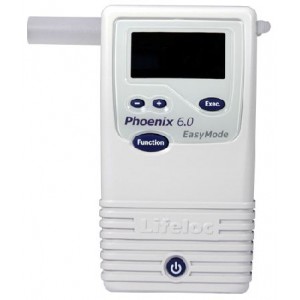FASTLane Urgent Care has expanded its occupational medicine services and is now a certified Breath Alcohol Testing facility. Located at 19900 Old Scenic Hwy in Zachary, FASTLane offers both Non-DOT and DOT drug and alcohol testing, as well as eScreen and DISA drug tests. Scheduled testing is available Mon-Fri- from 7 a.m. – 10 p.m. by calling Lane Regional Medical Center’s Service Coordination at 1-888-977-3319.
Alcohol and drug abuse creates significant safety and health hazards and can result in decreased productivity and poor employee morale. It also can lead to additional costs in the form of health care claims, especially short-term disability claims.
Drug and alcohol testing continue to be a critical part of the hiring process for most employers. A recent survey by HireRight found approximately 78% of companies reported performing drug and alcohol tests on their workforce.
Common reasons employers implement alcohol and drug testing are to:
- Deter employees from abusing alcohol and drugs
- Prevent hiring individuals who use illegal drugs
- Be able to identify early and appropriately refer employees who have drug and/or alcohol problems
- Provide a safe workplace for employees
- Protect the general public and instill consumer confidence that employees are working safely
- Comply with State laws or Federal regulations
- Benefit from Workers’ Compensation Premium Discount programs
Breath Alcohol Testing is one action an employer can take to determine if employees are currently under the influence of alcohol. It can identify evidence of recent use of alcohol, test for impairment or whether a person’s behavior is, or was, impacted by alcohol. There are a number of different bodily specimens that can be chemically tested to detect evidence of recent drug or alcohol use.
Breath is the most common for alcohol, reflecting DOT’s guidelines, while urine is the most commonly used specimen for illicit drugs, reflecting SAMHSA’s guidelines:
- Breath: A Breath Alcohol Test is the most common test for finding out how much alcohol is currently in the blood. The person being tested blows into a breath-alcohol device, and the results are given as a number, known as the Blood Alcohol Concentration (BAC), which shows the level of alcohol in the blood at the time the test was taken. BAC levels have been correlated with impairment, and the legal limit of 0.08 for driving has been set in all states. Under DOT regulations, a BAC of 0.02 is high enough to stop someone from performing a safety-sensitive task for a specific amount of time (usually between 8 and 24 hours) and a BAC reading of 0.04 or higher is considered to be a positive drug test and requires immediate removal from safety-sensitive functions. Under DOT regulations, a person who tests at the 0.04 BAC level may not resume job duties until a specific return-to-duty process has been successfully completed.
- Urine: Results of a urine test show the presence or absence of drug metabolites in a person’s urine. Metabolites are drug residues that remain in the body for some time after the effects of a drug have worn off. It is important to note that a positive urine test does not necessarily mean a person was under the influence of drugs at the time of the test. Rather, it detects and measures use of a particular drug within the previous few days and has become the defacto evidence of current use.
There are a variety of circumstances under which an organization may require a breath alcohol or drug test. Following are the most common or widespread:
- Pre-Employment: Pre-employment testing is conducted to prevent hiring individuals who illegally use drugs. It typically takes place after a conditional offer of employment has been made. Applicants agree to be tested as a condition of employment and are not hired if they fail to produce a negative test.
- Reasonable Suspicion: Reasonable suspicion testing is similar to, and sometimes referred to, as “probable-cause” or “for-cause” testing and is conducted when supervisors document observable signs and symptoms that lead them to suspect alcohol or drug use.
- Post-Accident: Since property damage or personal injury may result from accidents, testing following an accident can help determine whether drugs and/or alcohol were a factor. Substances remain in a person’s system for various amounts of time.
- Random: Random testing is performed on an unannounced, unpredictable basis on employees whose identifying information (e.g., social security number or employee number) has been placed in a testing pool and has an equal chance of being selected for testing, regardless of whether that person was recently tested or not. Because this type of testing has no advance notice, it serves as a deterrent.
- Periodic: Periodic testing is usually scheduled in advance and uniformly administered. Some employers use it on an annual basis, especially if physicals are required for the job.
- Return-to-Duty: Return-to-duty testing involves a one-time, announced test when an employee who has tested positive has completed the required treatment for substance and/or alcohol abuse and is ready to return to the workplace. Some employers also use this type of testing for any employee who has been absent for an extended period of time.
- Other: Blanket testing is similar to random testing in that it is unannounced and not based on individual suspicion, however, everyone at the worksite is tested rather than a randomly selected percentage.
For more information or to schedule occupational medicine services, please call Lane Regional Medical Center’s Service Coordination at 1-888-977-3319.




